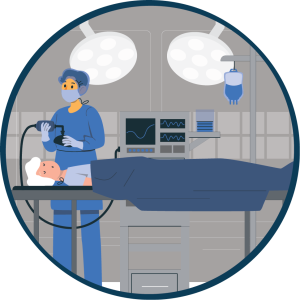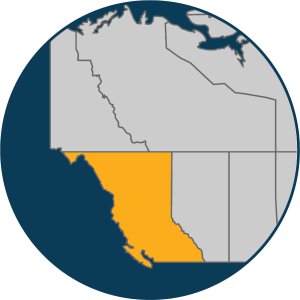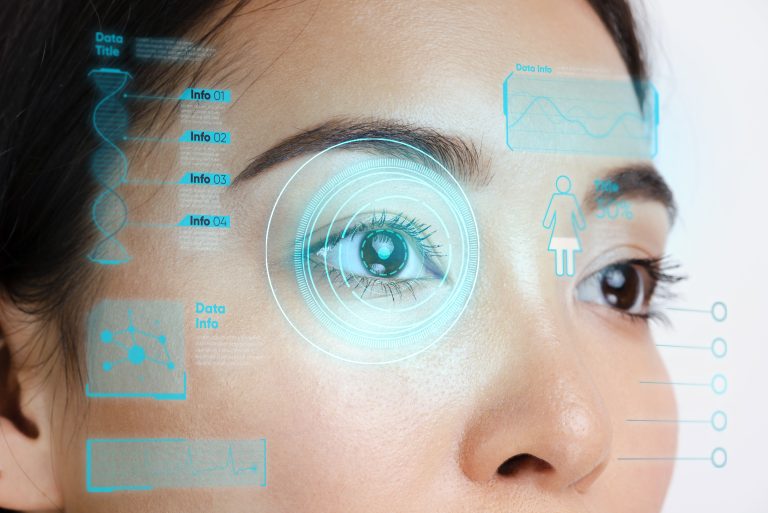Virtual health care has rapidly expanded across Canada in recent years. Dr. Vivian Yin explains its role in ophthalmology and how it’s being used to increase access to eye care.

Dr. Vivian Yin
Ophthalmologist and oculoplastic surgeon
University of British Columbia, Vancouver, BC
What is tele-ophthalmology?
Tele-ophthalmology is a way of delivering eye care remotely, using any form of telecommunications technology or digital medical equipment. It offers the opportunity for ophthalmologists to attend to patients who may have limited access to eye care, like patients living in remote or rural areas.
The impact of the COVID-19 pandemic on virtual eye care
While tele-ophthalmology isn’t new, the COVID-19 pandemic led to a rapid uptake of virtual eye care visits out of necessity.
Due to public health restrictions, virtual visits were encouraged/legalized in many jurisdictions
Patient acceptance of virtual health care grew
Physician billing codes for virtual visits were introduced by health authorities
While many in-clinic visits have resumed, tele-ophthalmology has proved valuable in addressing barriers related to accessing in-person care. The infrastructure is now in place to support its use in ophthalmic practice moving forward.
What might a typical virtual care journey look like?
See how tele-ophthalmology was used to help Tara, 61, receive the eye care she needed.

Tara, 61
Patient of Dr. Yin from Fort St. John, BC

Tara is a 61-year-old from Fort St. John, BC. She felt a lump on her eye and had some intermittent double vision for over a year. She is seen by a visiting ophthalmologist as recommended by her GP.


The visiting ophthalmologist arranges for a CT scan of her orbits and determines that Tara has a tumour behind her left eye in the lacrimal gland. She is referred to Dr. Yin, an oculoplastic surgeon in Vancouver, to discuss surgical treatment options.

Tara has a virtual consult with Dr. Yin via Zoom. During this appointment, Dr. Yin reviews Tara’s CT images (taken locally in Fort St. John). Dr. Yin explains to Tara the most likely diagnosis is a lacrimal gland tumour and suggests that Tara proceeds with a biopsy for diagnosis.


Tara travels to Vancouver for surgery. She meets with Dr. Yin right before the surgery for any additional questions.


Tara’s surgery is performed by Dr. Yin. She returns home to Fort St. John.

Tara’s follow-up appointment with Dr. Yin is conducted virtually.


Once Tara’s condition is considered stabilized, her care is managed by her local ophthalmologist.
Thanks to tele-ophthalmology, Tara only needs to travel to Vancouver once – for her surgery with Dr. Yin.
“I don’t think a virtual exam can replace an in-person appointment. Rather, virtual exams are an adjunct to help coordinate patient care in certain specific scenarios so that everything that needs to be done can be arranged in one trip.”
– Dr. Vivian Yin
How is tele-ophthalmology being used to improve access to care on a population level?
Tele-ophthalmology has a long history in Canada. Several provinces have established successful tele-ophthalmology programs for disease screening and management in remote and underserved populations.
Diabetic retinopathy (DR) screening in Northern British Columbia
In a program that ran successfully for many years, collaboration between the local community and ophthalmologists was key to a successful diabetes care program. The First Nation community took ownership of a diabetes screening clinic, with ophthalmologists acting as consultants and providing imaging cameras, training, and data collection. In addition to providing retinal screening, the program provided comprehensive diabetes care that was valuable to the community, with nurses and point-of-care labs doing additional assessments and education about diabetes management.


Retinoblastoma care in Ontario
Retinoblastoma is the most common form of childhood eye cancer. Since specialists are available in only a few centres of excellence, access to care remains an issue for many affected families. The retinoblastoma team at SickKids hospital in Toronto provides service to 100% of children with retinoblastoma in Ontario, as well as Alberta and Manitoba.
Inner city Ottawa
To help reach a highly vulnerable recent immigrant population in Ottawa, standing imaging cameras at drop-in community health centres can allow patients to get an eye exam at times and in ways that are more convenient to them, when there may not be an eye care professional available.


DR screening in Northern and Eastern Ontario
Artificial intelligence (AI) technology is being used to screen rural, remote, and Indigenous populations in Northern and Eastern Ontario for DR. The AI-based system can take and interpret retinal images without the need for an eye care specialist. Patients who fail the screening are referred to an ophthalmologist for further evaluation and care.
Quebec
Tele-ophthalmology programs have been successfully implemented to serve patients across various regions, including remote areas like Nunavik and Cree territories. These initiatives aim to address the unique healthcare needs of these populations, considering their geographical isolation and limited access to specialized eye care services. By connecting patients to ophthalmologists, optometrists, and family doctors, these underserved communities receive critical eye care services and screening for DR.

Tele-ophthalmology has evolved rapidly over the last 25 years. Rudimentary retinal photography used in the early days has been replaced by increasingly sophisticated imaging that can provide a more holistic eye exam, with the potential to detect diseases like glaucoma and macular degeneration.
What’s the future of tele-ophthalmology in Canada?

Home-based disease monitoring
New technology is allowing for certain diseases, like glaucoma, to be monitored at home
- A device can be used by patients at home to measure their intraocular eye pressure
- Their eye doctor can access the data and use it to help inform their treatment plan

Virtual eye clinics
Linking a centre in a rural community to a major centre via tele-ophthalmology could help increase access to eye care for many Canadians
- Patients in remote towns could visit a local centre staffed by an eye technician
- The technician would measure their vision, conduct assessments, and obtain slit lamp photos/other imaging
- In real time, an ophthalmologist could virtually review the
scans, consult with the patient, and prescribe treatment (initiated by the technician)
